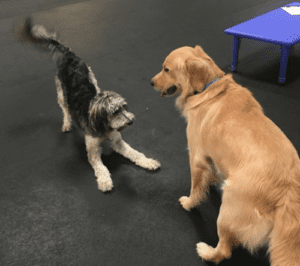
While the changing seasons may bring feelings of joy to humans, dogs must deal with the complications of being low to the ground.
Pollen, grass, and weeds may produce the same uncomfortable symptoms for dogs that humans experience: itching, respiratory issues, and the all-time classic — a runny nose.
Metro Dog recommends starting with the easiest dog allergy treatment: consistent cleaning to keep pollen and dust out of your home. If that fails to give your dog the protection it needs, what’s next?
First, know what to look out for:
What Causes Seasonal Allergies in Dogs?
Like humans, some dogs have seasonal allergies. These dogs have a weaker immune system than others, meaning that they need ample protection against springtime changes.
You’ll notice right away if your dog’s experiencing allergy-induced symptoms. When this happens, you need to decipher which of these common allergens is triggering their immune system:
- Grass Pollen
- Tree Pollen
- Weed Pollen
- Molds / Yeasts
- Dust Mites & Storage Mites
Dog Allergy Symptoms & Causes
You don’t know how your dog will react to seasonal irritants until it happens. As the season begins to change, look for the telltale signs that your pup is experiencing seasonal allergies.
Maybe they’re itching more than usual, or their eyes appear to be swollen. Both indicate a need for extra pollen, dust, or mold resistance at home.
If your dog is experiencing any of these classic allergy symptoms, contact your local vet:
- Skin Irritation: Scratching, Itching, Redness
- Respiratory Issues: Sneezing, Coughing, Shortness of Breath
- Eye & Ear Irritation: Watery, Red, or Swollen Eyes
- Paw Irritation: Licking, Rubbing
Treating Your Dog’s Allergies

It’s not hard to keep your dog safe from seasonal allergies. Identify their triggers (this may require a professional examination) and adjust accordingly. If your dog experiences minimal irritation, a simple cleaning routine will usually suffice.
In more severe cases, you may need to administer your dog appropriate medications to alleviate their discomfort. Consult a local veterinarian medical provider for more information about your dog’s specific needs.
In the meantime, try out these allergy-resistant tips:
Monitor Pollen Levels
Consider limiting the amount of time they spend in areas with high pollen or grass concentrations, such as parks or the backyard.
Try closely monitoring them while they play to see if they exhibit any physical reaction.
If you notice any redness or irritation, bring them back inside immediately. It is recommended that you schedule bathroom time for the afternoon, as this is when pollen levels are at their lowest.
Frequent Baths
One easy way to boost your dog’s allergy resistance is to give them frequent baths. In addition to removing dirt, frequent baths help reduce the amount of pollen that remains on your dog’s coat.
Paws and skin quietly collect unwanted irritants that may be causing your dog to have an allergic reaction. Ensure that these areas are thoroughly cleaned to ensure that pollen has been effectively removed.
Flea & Tick Prevention
Places with warm climates experience a higher level of flea and tick exposure than cooler locations. Dogs who are susceptible to flea and tick infestations may experience flea allergy dermatitis, or flea-induced skin irritation.
Flea exposure can cause several harmful reactions in dogs, including fur loss, skin infections, and more. Follow the same prevention techniques you would for other symptoms, as these procedures are likely to help block flea and tick reactions.
Keep Their Items Clean
In the same way homeowners clean their furniture as a part of their spring cleaning routine, keep your dog’s items clean. Items such as toys, bowls, and blankets may harbor pollen or bacteria.
It is also essential to wash their food and water bowls regularly.
Ensure a Clean Home
Make sure to clean your home frequently to keep it free from bacteria, pollen, and residue. Every time your dog returns inside, wash whatever they’ve touched. Whether it’s a toy or a couch cushion, apply some sort of cleaning procedure every time.
Avoid The Allergies With Indoor Play at Metro Dog

Curb pollen exposure by bringing your dog to Metro Dog for indoor play. Clean, safe, and well-informed about allergen-resistance, you can trust that Metro Dog will not put your pup in harm’s way.
We follow a bacteria-busting cleaning protocol each day, ensuring that pollen, dust, and grass have no time to take hold. When the weather starts to heat up and your dog’s outdoor time becomes limited, call Metro Dog. We’re happy to be your pet’s indoor escape from springtime allergens.
Bring The Fun Indoors at Metro Dog
Dog Allergy FAQs
How are dog allergies diagnosed?
Veterinarians use what’s similar to a human allergy panel to test your dog’s response to common allergens. Reactions should be evident within a short period, allowing the veterinarian to follow a clear treatment path.
What’s the best way to treat my dog’s allergies?
Treatments vary, as each dog reacts differently to allergens. Common treatment plans include things like medicated shampoos, special diets, and, on the severe end, antihistamines.
Can I give my dog over-the-counter allergy meds?
Do not self-medicate your dog with OTC medications. While some may be safe for pets, you need to consult a veterinarian for proper medication that fits your pet’s specific needs.
